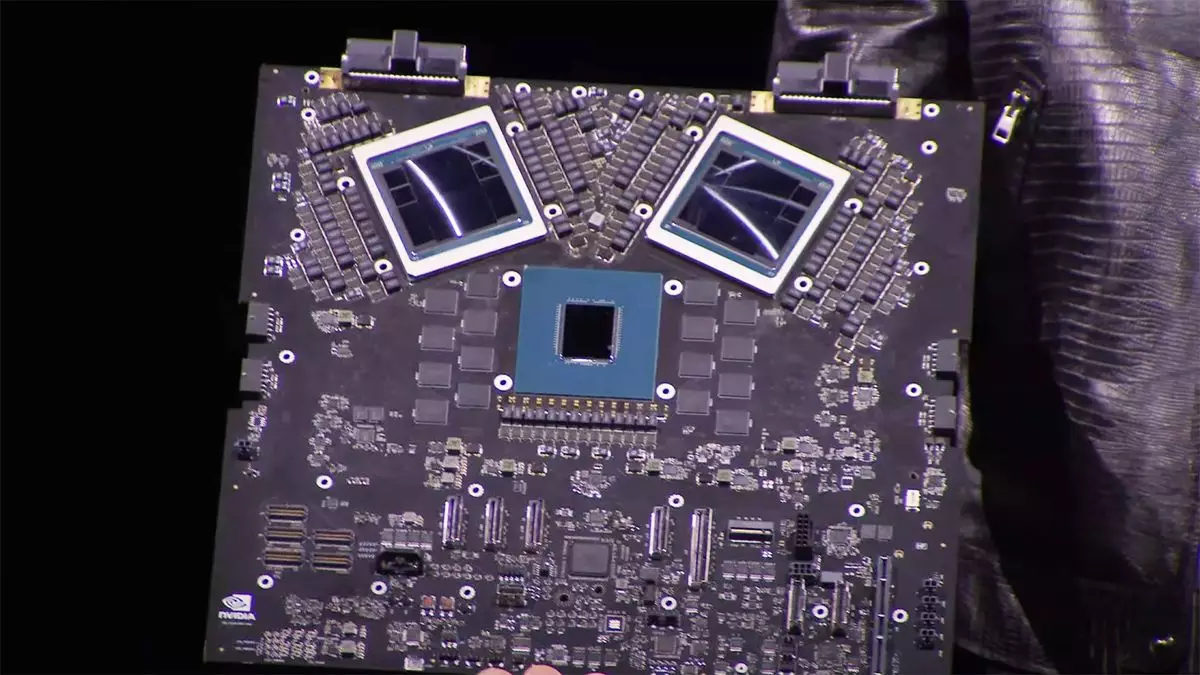In an age where artificial intelligence is quickly dominating technology, the availability of essential hardware has become a pressing concern for companies at the forefront of this innovation. OpenAI CEO Sam Altman recently took to social media platform X to share a common frustration that many in the tech world are facing in 2025: a severe shortage of graphics processing units (GPUs). His candid remarks do more than express a supply chain issue; they underscore a broader narrative around the intricacies of scaling technology in a rapidly evolving market.
Altman’s predicament is not just a personal grievance; it reflects a widespread reality in the tech industry where enterprise-grade GPUs are in high demand yet remain elusive. These powerful processors, such as those utilized in Nvidia’s DGX B200 and DGX H200 AI platforms, form the backbone of advancements in AI. It’s telling that OpenAI was the first to receive the DGX H200 last year, personally delivered by Nvidia CEO Jen-Hsun Huang, highlighting a unique relationship between these two companies. Yet, the enthusiasm over cutting-edge technology is tempered by practical limitations that threaten timely product launches.
The CEO pointed out the stark reality negatively impacting OpenAI’s operations: “It is a giant, expensive model. We really wanted to launch it to Plus and Pro at the same time, but we’ve been growing a lot and are out of GPUs.” His comments suggest that the interplay between supply and demand remains unpredictable. Scaling an infrastructure tailored to rapidly changing market needs is an exercise fraught with uncertainty.
As the demand for AI capabilities continues to rise, the ability to anticipate growth surges and the subsequent hardware needs becomes increasingly critical. OpenAI’s struggles complement the challenges faced by Nvidia, the semiconductor giant grappling with its own limitations in production and supply. With a combination of rising demand for GPUs and the current shutdown of older card production, it’s unsurprising that both companies are feeling the pinch.
Looking ahead, there are signs of optimism as OpenAI prepares to expand its GPU arsenal significantly. Altman announced plans to incorporate “tens of thousands” of GPUs into their operations next week, which they need to roll out their latest model, GPT-4.5. This forthcoming enhancement reflects a strategic response to current constraints and an adjustment of expectations regarding supply chain dynamics.
Moreover, Altman’s acknowledgment that OpenAI might explore creating its own AI chips further signifies a proactive stance towards breaking free from reliance on external suppliers like Nvidia. Such a move could decentralize the risk associated with supply shortages, foster innovation, and potentially lead to more tailored solutions for OpenAI’s specific needs.
Amid the logistical challenges, anticipation builds for the release of GPT-4.5. Altman’s excitement about the new model reveals his belief in its potential: “It is the first model that feels like talking to a thoughtful person to me.” This assertion hints at significant progress in the user experience and quality of interactions with AI. However, it’s noteworthy that Altman has tempered expectations, suggesting that while the model is exceptional, it may not necessarily dominate conventional benchmarks for AI performance.
As critical as the hardware shortages are, Altman’s pride in the AI’s capabilities outlines a crucial aspect of technology: the importance of innovation and user satisfaction. The real stakes are measured not only in the throughput of GPUs but also in delivering compelling, effective AI experiences that can genuinely assist users. Acknowledging that “no one would be more astonished than me to receive good advice from an AI” adds a human element to the promotional dialogue, suggesting that even industry leaders are eager for breakthroughs.
To summarize, Sam Altman’s recent comments on the GPU shortages serve as a significant reminder of the complexities involved in scaling technology in an ever-demanding market. As OpenAI navigates its hardware challenges while launching GPT-4.5, the broader implications for AI development and production logistics become clear. As advancements continue to unfold, the tech community eagerly waits to see how companies like OpenAI adapt to future challenges and seize opportunities to drive innovation forward.

